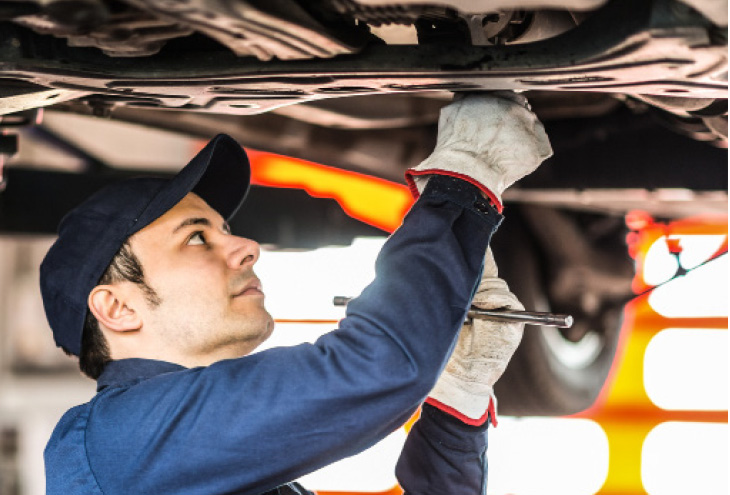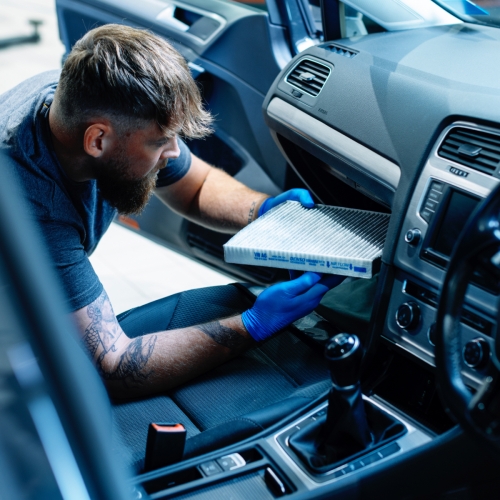
Following on from his fascinating trawl through the history of car safety systems, Ben Knight, Technical Support Specialist for Volkswagen Group Aftersales, returns to Tech Talk to bring us up to speed on the Haldex 4-wheel drive system.
Ben focuses on what the Haldex system is, its evolution, the Volkswagen Group vehicles that use it and last but not least, its servicing requirements.
What is Haldex
Haldex is a mechanical clutch coupling attached to the rear differential of a vehicle that allows a variable percentage of torque to be sent to the rear axle. The Haldex system was designed for transverse mounted front wheel drive vehicles in order to offer 4-wheel drive when required.
The Haldex unit allows the vehicle to run predominantly as front wheel drive. When rear wheel drive intervention is required, in cases such as wheel spin or understeer, the Haldex is activated, and a percentage of the engine torque is transferred to the rear wheels.
Early versions of the Haldex systems used the mechanical rotational speed difference between the front and rear axles to operate and determine how much torque was transferred through the Haldex to the rear axle.
The later versions of Haldex look at more complex vehicle data such as the individual wheel speed from the ABS speed sensors, the vehicle’s dynamic state (longitudinal and lateral movement) and inputs from the engine control unit such as accelerator pedal position and engine torque.
This data is sent to the Haldex processor which decides how best to respond to the specific driving situation. The later versions of Haldex can work proactively, predicting when they will be required and at what level of intervention, based on the data being transmitted from the vehicle.
Different Generations of Haldex
Generation 1:
This unit is fitted to vehicles such as the Mk1 Audi TT, Audi S3 8L and Mk4 Volkswagen Golf 4motion. The unit uses a mechanical oil pump as the primary source of oil pressure. A minimum engine torque split of 90% front and 10% rear power split is achieved with a maximum of 50/50 split.
Generation 1 Haldex is a reactive system and does not rely on any complex input data from the vehicle. The unit uses a replaceable paper oil filter and requires regular servicing.
Generation 2:
This unit was also mechanically operated but with simplified components such as oil control valves and galleries. A minimum torque split of 95% front and 5% to rear can be achieved with maximum distribution of 50/50 front to rear.
This unit is fitted to vehicles such as the Mk5 VW Golf R32, Audi A3 8P Quattro, and the early Mk2 Audi TT.
Generation 3:
The third generation was not used in any Audi or Volkswagen vehicles.
Generation 4:
The Generation 4 Haldex is a proactive system. It looks at ABS control unit and engine ECU data and can prime pressure to the clutch to allow for faster activation when needed. The unit has a 100% front to 0% rear torque split when not activated with a maximum of 50/50 torque distribution and uses a cotton filter in place of a paper element.
It also uses a more simplified oil system and an electronic pump that was used as the primary source of oil pressure for the first time.
The unit is fitted to vehicles such as the Facelift Audi A3 8P, later versions of the Mk2 Audi TT, Mk6 VW Golf R, and VW Tiguan.
Generation 5:
This unit has further reduced complexity, size and weight. It’s achieved by removing the pressure accumulator and control valve found in the Generation 4 Haldex and replacing with a simplified pump bypass system.
The control unit has been revised to allow for better proactive functions and, like the Generation 4 Haldex, uses inputs from the ABS and engine ECU to achieve this.
The Generation 5 Haldex also uses an oil strainer in place of a paper or cotton filter.
The unit is fitted to most of the current vehicles such as Mk7 VW Golf R, MQB Tiguan, Audi A3 8V, Audi RS3, Mk3 Audi TT and Audi Q3.
Servicing Haldex
As with all vehicle components that require lubrication, it is important to adhere to
the periodical service requirements. This ensures the components can work to their optimal performance, guaranteeing longevity and reliability.
The oil used in all Haldex variants is very specific to its operation and promotes friction of the clutch plates. Over time particles and contamination from the friction material can build up in the oil.
Changing the oil in line with the manufacturer’s guidelines ensures no damage or wear can occur. It is important that genuine Volkswagen Group Haldex oil and filters are used when servicing and that the oil is the correct type for the vehicle.
Generation 1 and 2 Haldex have a service requirement of oil change at 20,000 miles and an oil and filter change at 40,000 miles and so on every 20,000 and 40,000 miles. Generation 4 and 5 Haldex have no service requirement for changing of the oil filter and currently have an oil change requirement of every three years.





